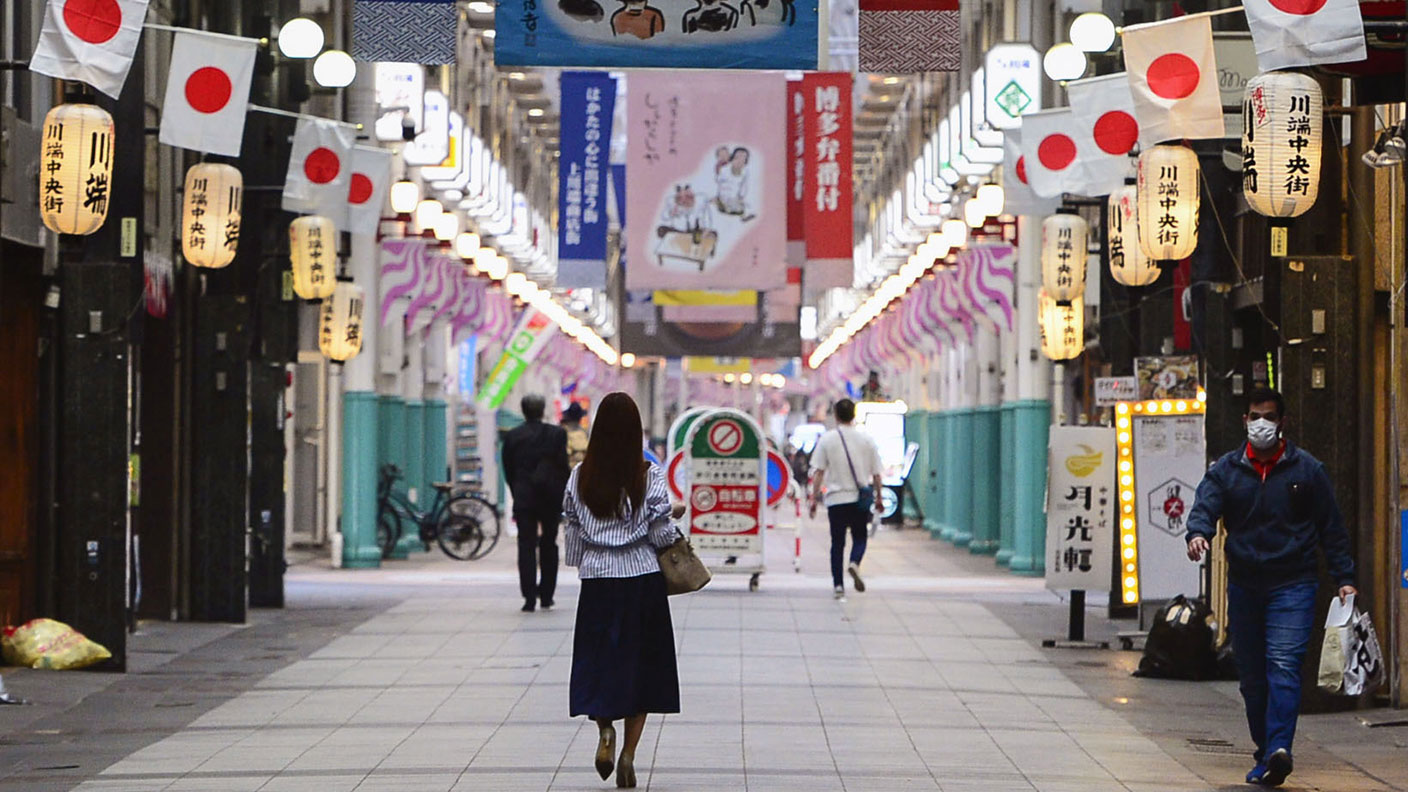“Cluster busting”: why Japan has been so successful in fighting Covid-19
Japan has had one of the lowest rates of death from Covid-19, despite its densely-packed, elderly population. Merryn Somerset Webb looks explains the secret of its success.


As of 28 April, despite being densely populated, jammed with super cities, and late to put in place only a sort-of-non-compulsory lockdown, Japan had recorded a mere 376 deaths caused by Covid-19. It’s a death rate so low that it even looks good next to Germany – which has been much praised for the mildness of its outbreak. What’s its secret?
Mike Bird of the Wall Street Journal asked this on Twitter this week. Everyone seemed to have an answer: the masks; the culture of rule following; the early closure of schools and universities; genetics; something in the water; the fact that most of the population have had the BCG vaccine; the low levels of obesity; the lack of vitamin D deficiency; the high number of smokers; etc, etc.
But there is one more well-researched possibility. In a note for clients of CLSA this week, Tomohiko Taniguchi, special adviser to Japan’s prime minister, explained. It is, he says, all down to cluster busting.
MoneyWeek
Subscribe to MoneyWeek today and get your first six magazine issues absolutely FREE

Sign up to Money Morning
Don't miss the latest investment and personal finances news, market analysis, plus money-saving tips with our free twice-daily newsletter
Don't miss the latest investment and personal finances news, market analysis, plus money-saving tips with our free twice-daily newsletter
In 1935, with funding from the Rockefeller Foundation, Japan opened its first public health centre (PHC) in Tokyo. The country then put in place a programme that led to the building of another 187 nationwide. They survived the war and the occupation. But the thing of note is that before and after the war, their priority, says Taniguchi, was always to “stay watchful all the time” for the emergence of TB cases. If one was found, they were tasked with rushing to the patient's residence, checking for clusters and sterilising the house (interesting 1949 video on this here)
Seventy-five years on, 469 PHCs are in operation across the country, with each manned, on average, by 64 medical professionals, including one to two licensed doctors. They still locate clusters, track links and conduct tests. It is this “accumulated wealth of expertise, rarely found elsewhere” that has made the difference. Japan has not had to rely on mass testing strategies because it’s health care history had already left a cluster-crushing strategy embedded in its system
This doesn’t mean that the culture of rule following and the exhortations from Abe to “refrain from going out” and “avoid coming into contact with others” aren’t part of the solution. Of course they are (and it is worth noting that passenger numbers at all major rail stations are down 84%-92%). But the success of the PHC system could turn out to have been the key thing that has prevented most clusters escaping their starting points – and kept the death rate low.
Get the latest financial news, insights and expert analysis from our award-winning MoneyWeek team, to help you understand what really matters when it comes to your finances.
Merryn Somerset Webb started her career in Tokyo at public broadcaster NHK before becoming a Japanese equity broker at what was then Warburgs. She went on to work at SBC and UBS without moving from her desk in Kamiyacho (it was the age of mergers).
After five years in Japan she returned to work in the UK at Paribas. This soon became BNP Paribas. Again, no desk move was required. On leaving the City, Merryn helped The Week magazine with its City pages before becoming the launch editor of MoneyWeek in 2000 and taking on columns first in the Sunday Times and then in 2009 in the Financial Times
Twenty years on, MoneyWeek is the best-selling financial magazine in the UK. Merryn was its Editor in Chief until 2022. She is now a senior columnist at Bloomberg and host of the Merryn Talks Money podcast - but still writes for Moneyweek monthly.
Merryn is also is a non executive director of two investment trusts – BlackRock Throgmorton, and the Murray Income Investment Trust.
-
 UK wages grow at a record pace
UK wages grow at a record paceThe latest UK wages data will add pressure on the BoE to push interest rates even higher.
-
 Trapped in a time of zombie government
Trapped in a time of zombie governmentIt’s not just companies that are eking out an existence, says Max King. The state is in the twilight zone too.
-
 America is in deep denial over debt
America is in deep denial over debtThe downgrade in America’s credit rating was much criticised by the US government, says Alex Rankine. But was it a long time coming?
-
 UK economy avoids stagnation with surprise growth
UK economy avoids stagnation with surprise growthGross domestic product increased by 0.2% in the second quarter and by 0.5% in June
-
 Bank of England raises interest rates to 5.25%
Bank of England raises interest rates to 5.25%The Bank has hiked rates from 5% to 5.25%, marking the 14th increase in a row. We explain what it means for savers and homeowners - and whether more rate rises are on the horizon
-
 UK inflation remains at 8.7% ‒ what it means for your money
UK inflation remains at 8.7% ‒ what it means for your moneyInflation was unmoved at 8.7% in the 12 months to May. What does this ‘sticky’ rate of inflation mean for your money?
-
 Would a food price cap actually work?
Would a food price cap actually work?Analysis The government is discussing plans to cap the prices of essentials. But could this intervention do more harm than good?
-
 Is my pay keeping up with inflation?
Is my pay keeping up with inflation?Analysis High inflation means take home pay is being eroded in real terms. An online calculator reveals the pay rise you need to match the rising cost of living - and how much worse off you are without it.


